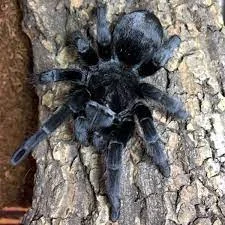Seasonal Behavior Changes in Grammostola pulchra: Breeding and Migration Triggers
Introduction: Rhythms of the Tarantula
Like many animals, the *Grammostola pulchra* exhibits changes in behavior driven by seasonal cycles. These shifts are often linked to fundamental life processes such as reproduction and optimizing survival conditions. Understanding these patterns provides insight into their natural history and can inform captive care.
Breeding Season Behavior
The most significant seasonal change revolves around the breeding season. While specific timing can vary with local climate, it generally occurs during warmer, more humid months.
- Increased Male Activity: Mature male *G. pulchra* become highly active during the breeding season. They largely abandon their burrows and wander extensively in search of receptive females. This period is often referred to as the “ultimate molt” phase for males, as their primary drive shifts to reproduction.
- Female Receptivity: Females tend to remain in or near their burrows but may signal readiness through pheromones. They are generally less mobile than males during this time.
- Courtship Rituals: Encounters involve complex courtship rituals, often involving drumming by the male on the female’s web or burrow entrance to signal his presence and species identity, avoiding being mistaken for prey.

Migration and Activity Patterns
While “migration” in the sense of long-distance travel isn’t typical for tarantulas, seasonal shifts significantly impact their activity radius. The wandering behavior of mature males during the breeding season is the closest analogy. Outside of this period:
- Reduced Activity: During colder or drier months, *G. pulchra* generally become less active, spending more time within their burrows to conserve energy and moisture.
- Opportunistic Foraging: Feeding might decrease but continues opportunistically when conditions allow and prey is available near the burrow.
Understanding the Brazilian black tarantula behavior patterns throughout the year helps appreciate their ecological adaptations.
Environmental Triggers
These seasonal behaviors are primarily triggered by environmental cues:
- Temperature: Increasing temperatures often signal the start of the more active season and prime conditions for reproduction.
- Rainfall/Humidity: Increased humidity and rainfall can stimulate activity, especially for males searching for mates, and can influence prey availability.
- Photoperiod: Changes in day length might also play a role, although temperature and humidity are often considered primary drivers for invertebrates like tarantulas. Phenology, the study of cyclic and seasonal natural phenomena, explores these relationships.
Note for Keepers: While you don’t need to perfectly replicate seasons, understanding these triggers helps explain why a mature male tarantula might suddenly become very active and seem intent on escaping its enclosure.
Implications for Keepers
Observing these natural patterns can be fascinating. Keepers of mature males should be prepared for increased restlessness during certain times of the year. Ensuring enclosures are secure is paramount. While females remain relatively sedentary, providing consistent conditions year-round supports their health, regardless of natural seasonal cues they might perceive subtly even in captivity.
Further Reading: Explore the general study of seasonal biological cycles in Phenology on Wikipedia.